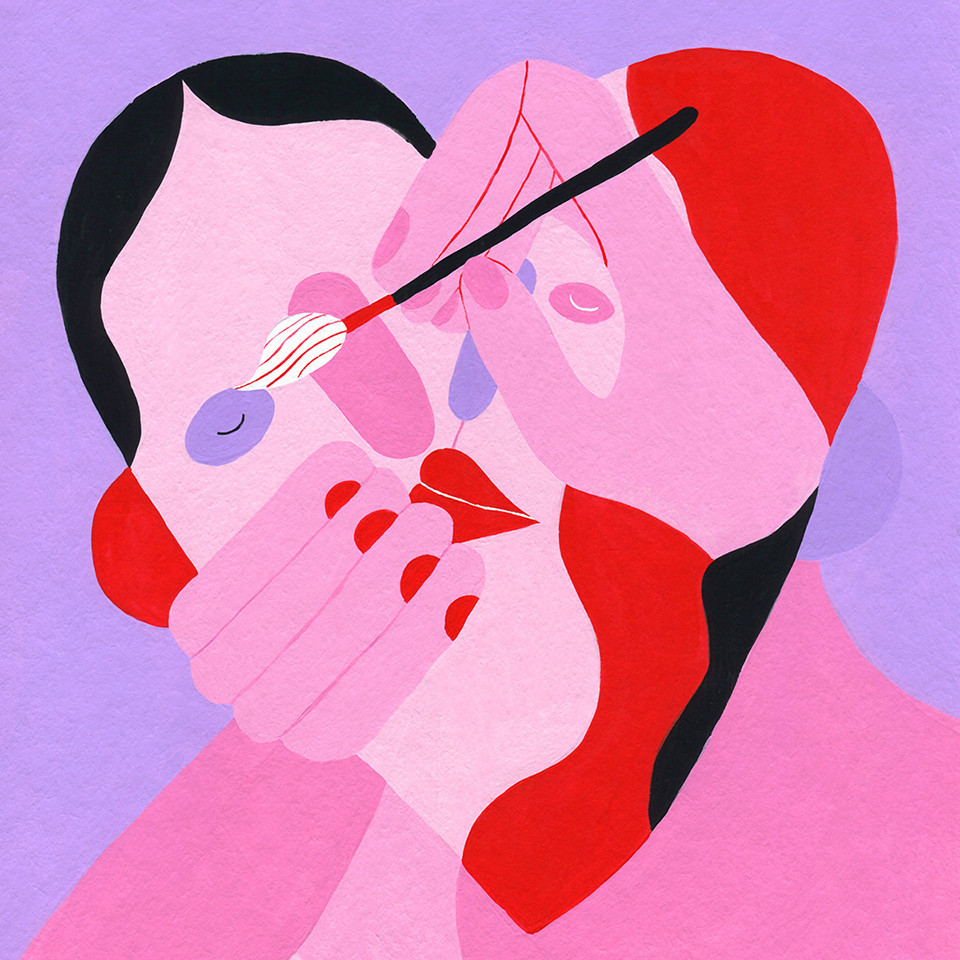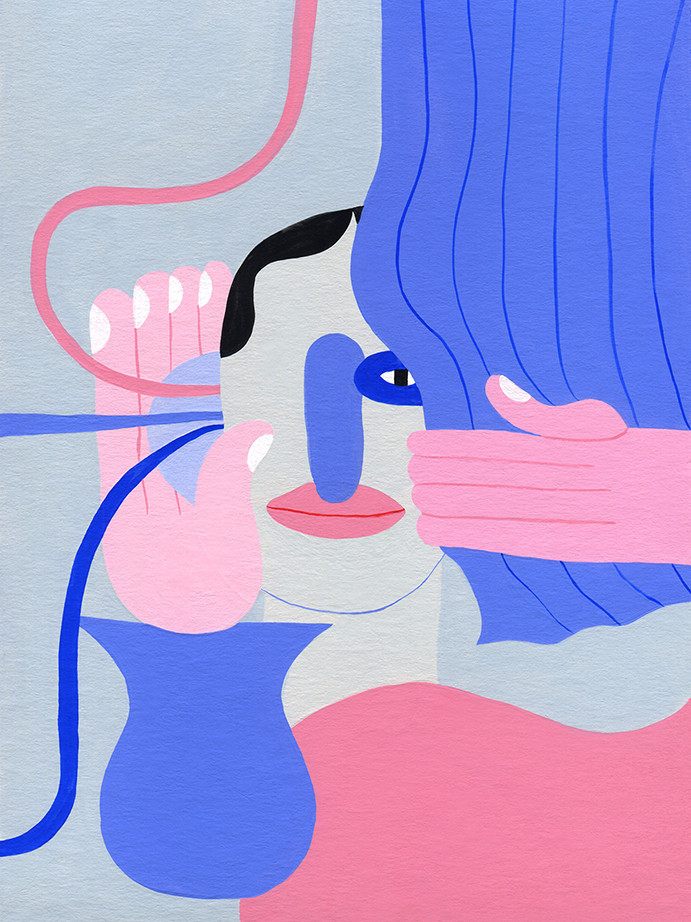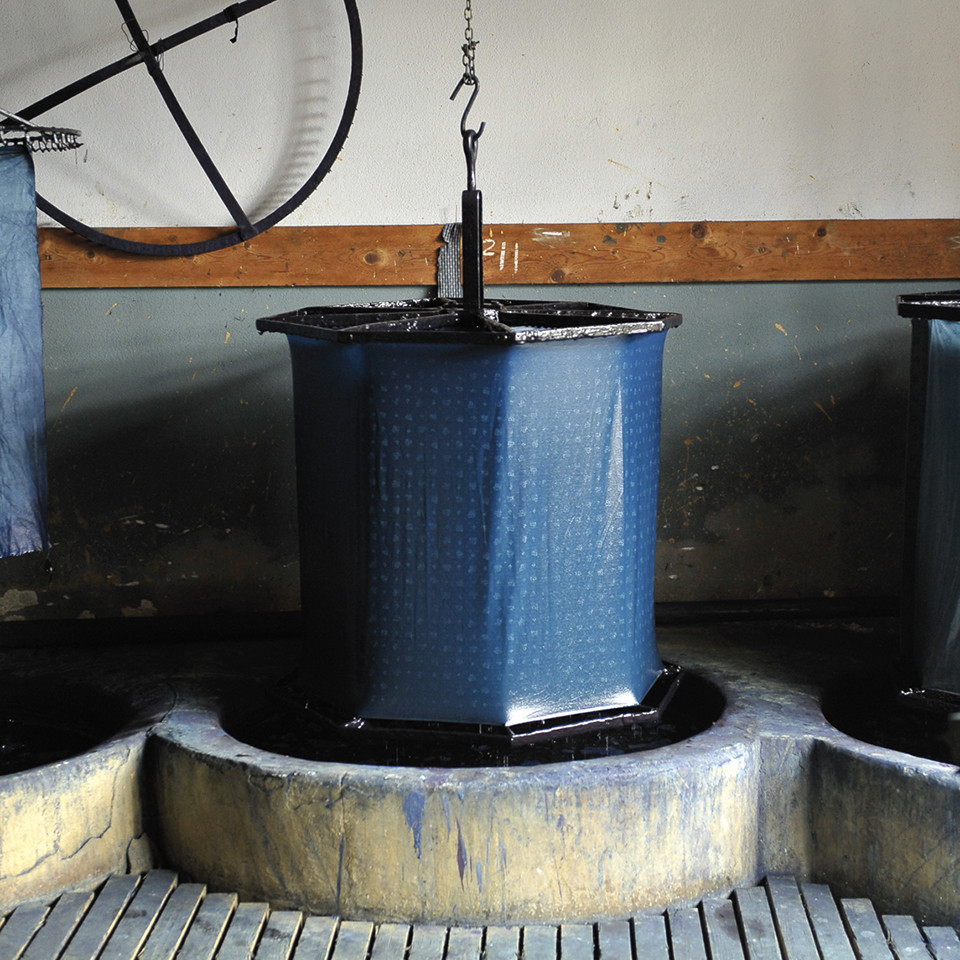
Do you speak woke?
Text by Oda Albers, Illustration by Kissi Ussuki
In recent years the “woke” movement has spread from the US to Europe, with many taking pains to be more “woke”. Some though remain unsure what that even means and others reject the concept out of hand, while others still initially embraced “wokeness” but are now distancing themselves from it. We take a brief look at a contemporary debate that for some is a form of culture war…



Are you mindful of racism? Do you take heed when someone nearby is discriminated against because of their skin colour, origin, disability, appearance or sex? Do you care about the environment, the planet? And set store by a respectful tone? Of course, the vast majority would say. But what about all those hidden – or even structural – forms of everyday discrimination that the unaffected may not even notice? Those who are sensitive towards and active around such issues are known as “woke”. “Wokeness” is thus the label given to this mindful attitude towards society, and to the chiefly digital movement behind it, a movement whose influencers are quick to call out instances of society turning a blind eye to these matters.
But how and when did the movement come about? And who exactly was responsible for this awakening? The origins of the word itself go right back to the American anti-racism movement: it first featured in the 1938 song “Scottsboro Boys” by blues singer Lead Belly about the unfair trial of nine Afro-American teenagers who’d been sentenced to death because white teenagers accused them of rape. In the spoken words after the song, the singer warns “all coloured people” to “stay woke”. It then cropped up again in the 1960s in author William Melvin Kelley’s writings about racism, but it was Erykah Badu’s 2008 track “Master Teacher” with its chorus of “I stay woke – dreams, dreams” that ultimately popularised the term. Twitter users began applying #staywoke to posts about racism, “stay woke” became a rallying cry for Black Lives Matter and the hashtag was soon being applied much more broadly to highlight injustice, inequality and minority oppression – discrimination against women or LGBTQ individuals, for example. The #metoo phenomenon, which saw women posting, sharing, commenting and mobilising, chiefly on social media outlets such as Twitter, Instagram and YouTube, was also part of the woke movement. For all those who had yearned for change but hitherto felt powerless, a Twitter account their only tool, being part of #metoo was an opportunity to make themselves heard and bring about change.
And the pressure on institutions, businesses and political organisations to acknowledge and eradicate injustice did genuinely increase as a result, with the shitstorm proving the movement’s most effective weapon. Faced with thousands of social media users raging for days on end and celebrities weighing in, few companies, institutions, parties or individuals could afford to turn a blind eye or remain inactive. The global fashion world was also targeted – be it around labour conditions for garment workers in the global South, for ageist or racist advertising or for cultural appropriation on fashion week catwalks. Firms and individuals were denounced, “cancelled” and shamed – and things did start to change.
Change has long since begun – in our minds and in those of the industry’s movers and shakers. The one thing we need to avoid is being paralysed with fear or simply waiting for the old world to return. We should be slashing our tethers, running free, taking action and bringing about change. Dare to voice new ideas, even those that are long overdue. And to push forward the good ideas. To join forces and work together. Don’t waste this crisis! We may well end up wearing jumpers and T-shirts for a while before returning to blouses and blazers. Who knows? And we’ll probably wear that particular jumper for longer, too. What’s not to like about that?
The woke have already achieved a great deal – not only in terms of public awareness.
Today, New York is at the forefront of efforts to promote diversity, transparency and sustainability. The city has thus drafted a new bill that would commit labels to supply chain transparency and see manufacturers facing hefty fines if their operations are not socially or environmentally sustainable. Revolutionary stuff. The woke have thus already achieved a great deal – not only in terms of public awareness but also in the real world of business and politics. Of course, when winds of change become this powerful, sometimes even kicking up a storm, there is always going to be a backlash. In the US, it came swiftly from those, primarily conservatives, who saw their privileges and profits under threat. Anyone criticising wokeness was thus immediately suspected of being reactionary, old-fashioned, uncool or even racist, of not wanting to make the world a better place, with critics derided as “old white men”. In Europe, too, it was conservatives who initially took a critical attitude towards the movement. In France, even the liberal Emmanuel Macron worried that American-style woke identity politics might take hold at French universities and even endanger cultural freedoms.
Now though criticism is also being voiced on the left and within the woke movement itself. Barack Obama has thus called on young American activities not to be too woke, pointing out that being as judgmental as possible so as to feel good about yourself wasn’t helpful. “The world is messy,” he said. “There are ambiguities. People who do really good stuff have flaws.” That’s a lesson some woke influencers have had to learn for themselves. The Austrian blogger and sustainability pioneer DariaDaria, for instance, provoked a shitstorm by posting about a sweet potato she’d roasted in the oven. What was the problem? That oven-roasting a single sweet potato was, of course, a wasteful use of energy and thus not sustainable at all…
It’s primarily this culture of moralising public denunciation that even like-minded individuals, those who share the movement’s desire for a fairer, greener world, are increasingly put off by. Writing in German news magazine Stern in summer 2022, the author, political scientist and journalist Jagoda Marinić described this phenomenon as the “revolution eating its children” and explained how she was increasingly distancing herself from wokeness. While she still shared its basic values, she felt the debate had now escalated.
So how do we find a way to work towards building a better world without causing offence, escalating tensions or shaming people? Marinić for her part is adamant that “shitstorms endanger dialogue”; instead, she appeals for an open exchange of views – and not just within our own digital bubbles. “The loudest and most strident is not necessarily also the most important voice on a subject.”
Each of us can make our own quiet contribution, namely by first listening – be it to our own parents during family Christmases, to farmers selling vegetables at market stalls, or to taxi drivers – and then talking, not at each other but to each other! In the process, we would probably do well to bear in mind the values the woke community itself originally championed: respect, tolerance and diversity – and to take a considerate tone rather than rushing to condemn.
Past Stories
Copy












